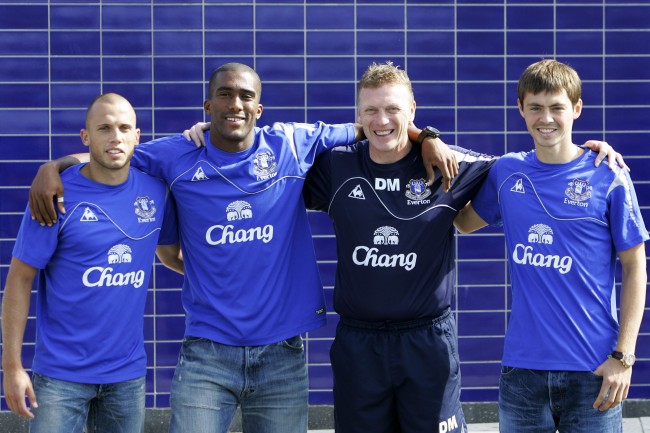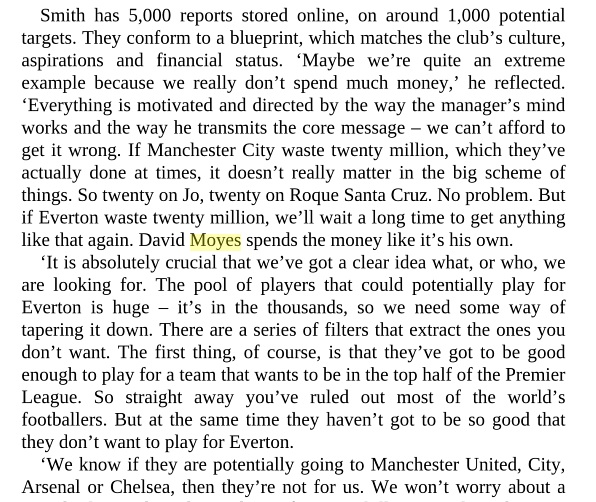Manchester United watch: Moyes is King of the Nowhere Men, Ander Herrera is exposed and the Glazers’ pain
MANCHESTER United watch: an at-a-glance look at United in today’s news:
The Times: “American owners ready to fund manager’s call for world-class players”
Why didn’t they buy Gareth Bale?
David Moyes will be given substantial funds to reshape his Manchester United squad with the Glazer family recognising that the manager requires world-class reinforcements to help to maintain Sir Alex Ferguson’s legacy of success.
The United manager is expected to make a foray into the transfer market in January providing leading targets become available as the Barclays Premier League champions look to put the frustrations of a miserable summer behind them…
The Glazers are thought to share Moyes’s view that the squad needs strengthening in key areas and will not balk at spending well in excess of £100 million to ensure they remain successful in the coming years.
Who do they buy?
United continue to keep tabs on Ander Herrera, whom they have been monitoring for 2½ years, but the £25.6 million bid they had rejected for the Spain Under-23 midfielder last month was at the upper limit of their valuation. As such, it seems unlikely at this stage that the club would be prepared to meet the €36 million (£30.2 million) release clause in his contract with Athletic Bilbao.
Andrés Iniesta’s situation at Barcelona is being watched from a distance but there is little expectation of the Spain midfielder leaving the Nou Camp. Ilkay Gundogan, the Borussia Dortmund midfielder, also has his admirers among United’s coaching staff.
It remains to be seen whether United make a renewed effort to buy Leighton Baines or Fabio Coentrão, the Everton and Real Madrid left backs for whom they had bids rejected in the summer, or pursue a younger target, such as Luke Shaw, of Southampton.
Eliaquim Mangala, the highly regarded Porto centre half, is regarded as a potential successor to Ferdinand, although Moyes faces competition from Chelsea, City and several leading European clubs for the 22-year-old, who has a reported €45 million release clause in his contract.
Matt Dickinson says it’s more complicated than that. He looks at how Moyes traded players at Everton:
…chronicled in detail by Michael Calvin in The Nowhere Men, his original book about the scouting business. It is a fascinating glimpse into Moyes’s methods and how Everton used scouting to punch above their weight.
The book takes us behind the locked doors of Everton’s recruitment room under Moyes… Every manager collects scouting data, but none with the zeal of Moyes, whose head of technical scouting, James Smith… kept a database of thousands of reports on the abilities of more than 1,000 players. The long wall in this office was covered in an array of whiteboards, detailing targets, positions, ages, contracts and ratings; hundreds of players listed in various different inks from foreigners under review to “live” targets under constant monitoring. Another board showed the ideal Premier League choices, all aged under 26, with votes from scouts to establish which was top choice; another had a list of players under 23 in English lower leagues.
There was a board of those players Moyes was actively seeking to sign next to another showing how the manager envisaged the development of the first team, with players phased out and how new recruits would come in (which is why the room was strictly off limits to his squad).
This dazzling detail was merely an easy checklist. The real data was kept on computer in the vast bank of reports and profiles. Moyes would demand an “MOT test” for serious targets, with up to 50 reports compiled by as many scouts and coaches on a single player — on top of his own trips.
How does that prudence and intelligent buying fit with spending massive sums at United?
At United there is regret, for example, that they did not bid £50 million for Cesc Fàbregas to see if Barcelona could have been persuaded to negotiate. Moyes, understandably in his first window, was cautious. They wonder now whether they should have closed the deal for Thiago Alcantara instead of allowing the Barcelona schemer to slip away to Bayern Munich. Moyes, though, wanted to stay true to his habits of amassing multiple reports. Without those, he was not sure.
Now they agonise over Ander Herrera, the target at Athletic Bilbao, but must do so without enjoying the secrecy of the recruitment room.
It’s not Everton:
Tony Evans in the Times:
Moyes was bequeathed the worst United squad since his predecessor broke the club’s 26-year title drought in 1993… United should have the fiscal firepower to compete with the biggest clubs in Europe. Yet since the Glazer takeover, too much of the prodigious income that flows into Old Trafford has been diverted to pay interest fees, debt repayments and bank charges. In the accounts released this month, there were £71 million outgoing in financial costs. That knocks a severe hole even in a business that generated an income of £363 million.
Ferguson’s management masked the poisonous impact of the leveraged takeover. The Americans borrowed £525 million to buy United. They have spent £680 million servicing the debt. The former manager’s brilliance meant the impact of this drain on club cash was barely noticed. Until now.
Ferguson’s departure may have been the eye of a perfect storm that began forming in 2005 . Moyes may not be the man to ride it out.
Mark Ogden in the Telegraph looks at the weakened Moyes:
The narrative of the season so far from Moyes has been one of lowering expectations. The squad, he insists, is not strong enough in key areas and the Scot even suggested in the wake of the 4-1 defeat at Manchester City last week, which he described as “embarrassing”, that he required two new players to go straight into his starting 11.
Moyes is undoubtedly correct in his assessment, United do lack quality, particularly in midfield, but there is a danger that he is giving his players an excuse for failure by repeatedly highlighting their frailties.
Ferguson, in contrast, would never talk his team down. He would often exaggerate the potential of his players simply to instil the belief that they could achieve great things.
Phil McNulty tells BBC readers:
It is unlikely Ferguson would have talked down Champions League expectations but this is the different world Moyes now occupies and even his fiercest critics must accept he will take time to fully acclimatise.
One thing is certain: Moyes has the most exciting and toughest job in club football. How does he follow Ferguson?
Photo: English Premier League soccer team Everton’s new signings, John Heitinga, left, Sylvain Distin, second left, and Dinijar Bilyaletdinov, right, pose for photos with team manager David Moyes, second right, at the Everton training ground, Liverpool, England, Friday Sept. 11, 2009.
Posted: 1st, October 2013 | In: manchester united, Sports 1 Comment | TrackBack | Permalink




